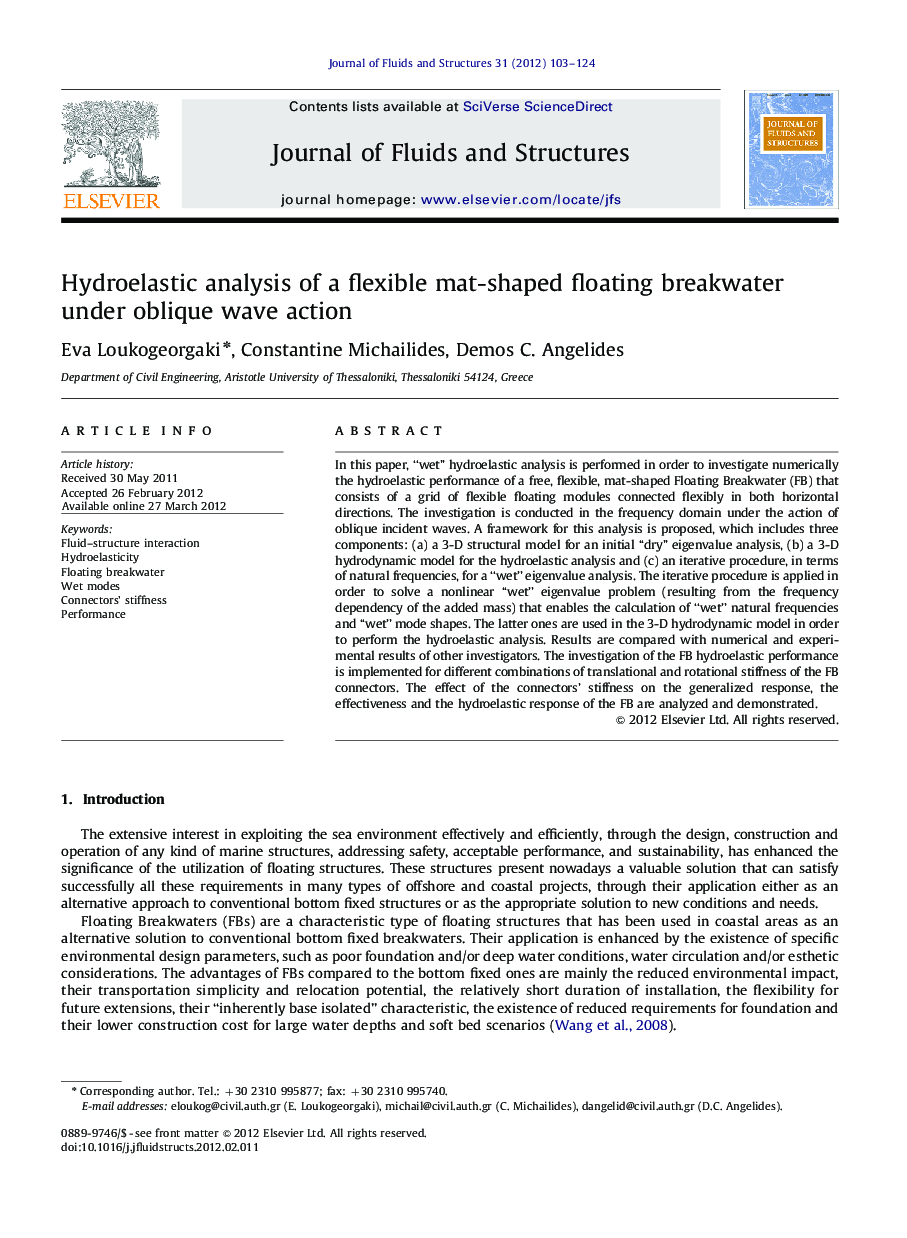| Article ID | Journal | Published Year | Pages | File Type |
|---|---|---|---|---|
| 797087 | Journal of Fluids and Structures | 2012 | 22 Pages |
In this paper, “wet” hydroelastic analysis is performed in order to investigate numerically the hydroelastic performance of a free, flexible, mat-shaped Floating Breakwater (FB) that consists of a grid of flexible floating modules connected flexibly in both horizontal directions. The investigation is conducted in the frequency domain under the action of oblique incident waves. A framework for this analysis is proposed, which includes three components: (a) a 3-D structural model for an initial “dry” eigenvalue analysis, (b) a 3-D hydrodynamic model for the hydroelastic analysis and (c) an iterative procedure, in terms of natural frequencies, for a “wet” eigenvalue analysis. The iterative procedure is applied in order to solve a nonlinear “wet” eigenvalue problem (resulting from the frequency dependency of the added mass) that enables the calculation of “wet” natural frequencies and “wet” mode shapes. The latter ones are used in the 3-D hydrodynamic model in order to perform the hydroelastic analysis. Results are compared with numerical and experimental results of other investigators. The investigation of the FB hydroelastic performance is implemented for different combinations of translational and rotational stiffness of the FB connectors. The effect of the connectors' stiffness on the generalized response, the effectiveness and the hydroelastic response of the FB are analyzed and demonstrated.
► “Wet” hydroelastic analysis of flexible floating structures. ► Hydroelastic performance of flexible floating breakwater. ► Good comparison with experimental results. ► Connectors' translational/rotational stiffness effect on hydroelastic performance. ► Rotational stiffness affects structure's hydroelastic response and effectiveness.
